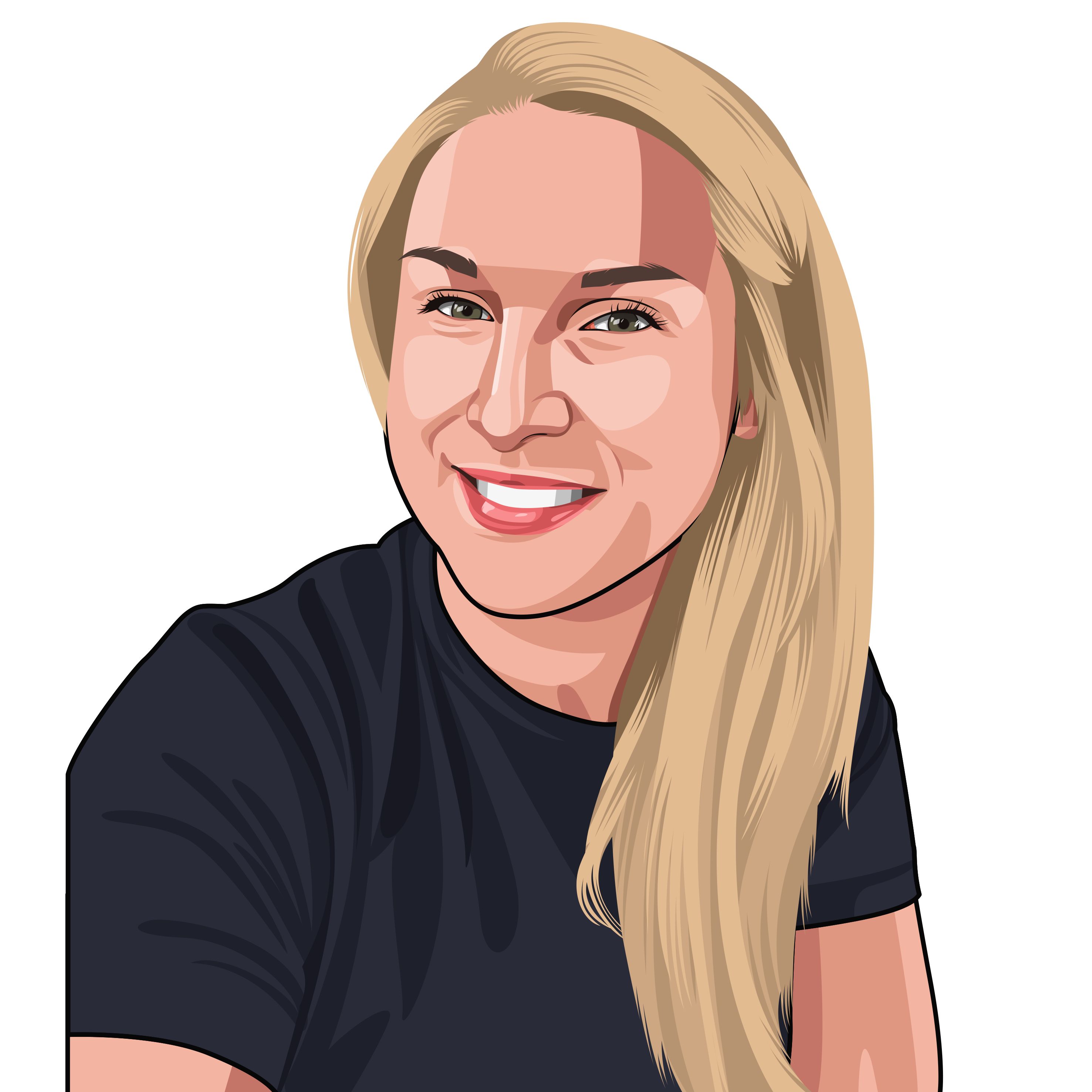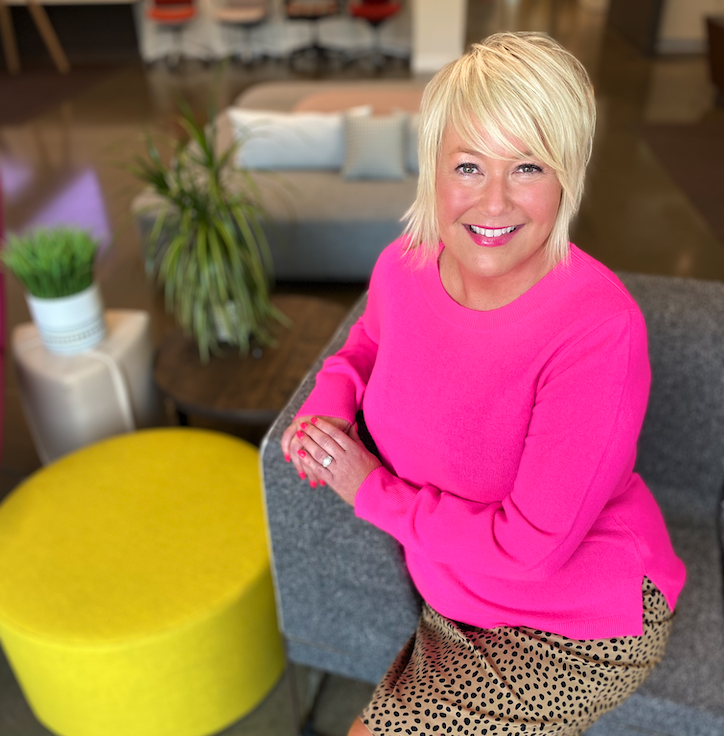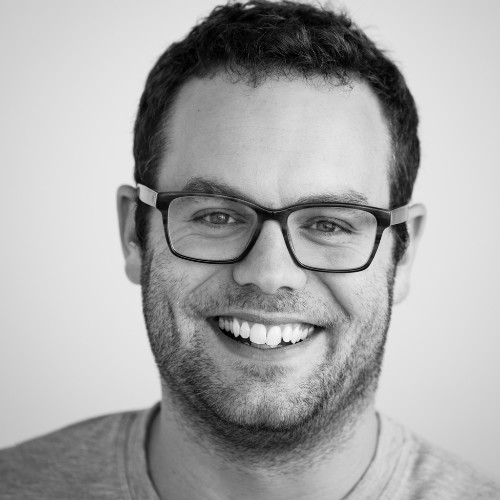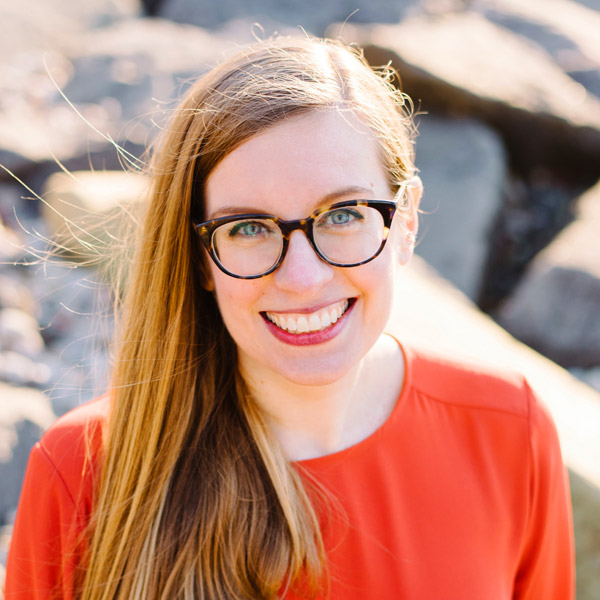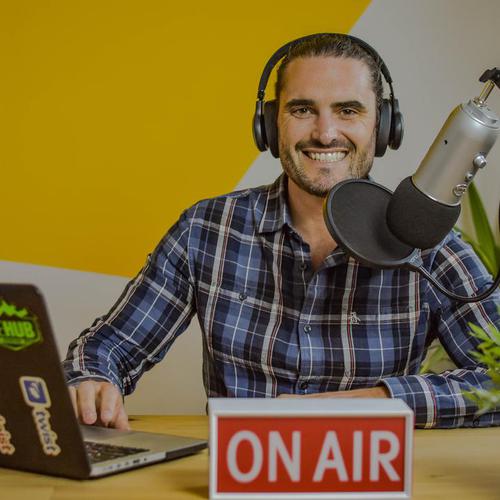Danielle McDowell has been a digital nomad most of her career. She’s had a dedicated office outside her home just once for a short period of time.
She’s been on the front lines of how companies are reorienting themselves to physical space.
Before COVID, she ran a co-working space that was utilized mostly by startups when they had fewer than 10 employees. It was a place for small teams to meet up and control expenses before they moved into a permanent office. Something like a shared, starter office.
Now, she runs 76 Forward at the 16 Tech campus in Indianapolis. And there’s a distinct difference in who uses the space, and how companies use it.
Danielle notices that more medium and large companies are interested in having space in a co-working location. There are two major use cases. First, “they’re using it to reduce the overhead of physical real estate, but still give a place for their employees to come and work outside of the home or to convene teams. And then two, they are utilizing it to not just give a physical space for someone to come work but give them a community to step into.”
She has one client who has a team of 75, but only rents out daily space for about 20 people. They will rent out larger rooms as needed when the whole team gets together.
How many days in the office?
One big question for companies trying to do a hybrid model is how often people are in the office. Danielle sees a lot of variance here, not just from company to company, but from individual to individual. Some folks like to have a dedicated space outside the home to work from every day. Others only slip in once a week or less depending on how often they need to meet with others.
What gets you out of the home
Danielle also noticed another trend in physical space which is community events that go beyond just one company. She said there’s a big opportunity for people who organize events that bring together peers who need that extra element of being together. Think about people in leadership roles, or specialists who don’t have others inside their company to connect with. Those people are often more willing to come to events if they know there will be others like them around.
Essential hardware for meeting rooms
The technological needs of meeting rooms have changed. To accommodate people not in the room, a meeting room needs to have several large screens. Danielle said many of her clients love using Meeting Owls as a way to give a much richer experience to people not in the room. Most teams are also using Mural for digital whiteboards.
The future of architecture
Danielle talked about the future of office architecture. As fewer companies invest tons of money into physical structures, what will happen to sprawling and jaw-dropping cityscapes and corporate campuses? We might not look to individual companies to create these spaces, but more co-working locations like 76 Forward who get more return on the investment.
However, Danielle and I talked about how companies might spend big on digital architecture. As the office leans toward the use of VR and virtual spaces, look for them to invest a lot of money in creating digital landscapes that impress recruits and make employees feel more inspired as opposed to the cartoony versions we see now.
Links
Welcome back to The Digital Workplace podcast. Today, our guest is Danielle McDowell. She is the Managing Director for 76 Forward @ 16 Tech in Indianapolis. Hi, Danielle, how are you today?
I’m great, Neil. Thanks for having me.
So excited to have you on. We’ve actually been chatting for a while building up to this moment of actually recording, but I’m excited to dig in deep to what you’re doing, and different things. But as always, we’re going to start with our captcha question, make sure we’re actually talking to a real human being. Danielle, your question is, what has been the highlight of your week?
The highlight of my week, and I’m going to go back on a seven-day period, so, actually on Thursday of last week, I was able to collaborate, my team and I, were able to collaborate alongside the Powderkeg team here in Indianapolis, and we hosted one of their first in-person events post-COVID, and did a reception for their culture awards here at 76 Forward @ 16 Tech. And we gathered probably about 75 people, which was really interesting, and we were able to have some cocktails, and we were able to have some little nibs and bites and talk about what it was like to network and be together again.
Do you think that 75 people from this point onward in post-COVID is going to be like, that’s a huge event? Because before that, that was like a good-sized event or something like that. So, what’s your take on that?
I think that it will be an average-sized event. It’s one of our larger events that we have hosted from a networking perspective. But in the same building we also have the amp, which is about 40,000 square feet of open space. It’s essentially a food hall. And we’ve seen folks gathering for holiday parties in upwards of 200-250. So, I think it really depends on how important the gathering is to someone. And secondly, how relevant it is to what it is they’re trying to accomplish. So, is it your kids showing up at a holiday play? Or is it just a super curated networking event? So, I think those kinds of events will continue to see people gathering.
Excellent. Great. Well, you are certified as a true human. So, we appreciate you going through the test. That works. So, 76 Forward @ 16 Tech. We’re talking about really the future of actual spaces in a digital workplace and physical space as it goes through. So, let me just throw that out there to you. Physical space was taken for granted, I think, in pre-COVID times. It was just what you did. There were some outliers who had other plans, but for the most part, it was just there. Now, a physical space is a totally different concept to companies that come through. So, tell us what you’re seeing from people you’re interacting with.
I mean, as everybody knows, COVID was just a huge shift in the way that people worked. And what we found was that there were a lot of employees out there who really enjoyed working from home. There were elements of working from home that they really learned to enjoy. But the reality of working in a fast-paced environment is that there are times when you physically need to be in the same room as someone, like, when you’re collaborating, when you’re working together. And so, our space here at 76 Forward on the 16 Tech campus was really designed to allow for that collaboration. We do have spaces where folks are able to reserve and take on private workspace. However, we have a large amount of space that’s dedicated just to collaboration space. So, on our campus, in our 56,000 square feet we have here, upwards of, I would say, 40% of the actual square footage is meeting rooms and what I call ‘focus rooms’ for someone to take a Zoom call while they’re at the office.
And then we also have free space essentially, where it’s like a cafe and lounge where people are able to step away from their workspace and have a cup of coffee or make a phone call, and things like that. The way that people are utilizing space has been really interesting. You know, prior to this, I used to run an organization called The Speak Easy, and the majority of my members really were truly startup entrepreneurs. It was that first, maybe one to five employees, which got together and utilized the space that we had. What we’re seeing here today, as we come up in 2022, is that we see medium and even large corporations that are utilizing co-working space like what it is that we have here, to do two things.
One, they’re using it to reduce the overhead of physical real estate, but still give a place for their employees to come and work outside of the home or to convene teams.
And then two, they are utilizing it to not just give a physical space for someone to come work but give them a community to step into. So, for instance, we have Lilly, which is going to be taking on a wing inside of our studios here. And they will be utilizing a research and development team here. But they’re not just utilizing space. They’re also utilizing it to step into an innovation community, so that they’re able to put their team members among other people who are in a wide variety of, whether it be a startup environment, or a startup support agency of some kind, so that they can pull learnings faster being outside the four walls of the physical building campus.
So, it’s a really interesting and innovative use of space, not only for those initial entrepreneurs who are getting off the ground, but for folks who are looking to be intrapreneurial inside of larger medium and large-size organizations.
Definitely. I think when you think of co-working space pre-COVID, it was mostly a small company, a startup company, that really, financially, just makes more sense to use something like that. And then you grow out of that, and you get to your own space that you have dedicated for that. But now like you said that we’re re-looking at that concept about what that means and how to use that. Correct my assumptions here, when I think about physical space, I’m seeing two main purposes for a shared physical space for a company. One is, like you said, for focus work, which, for a lot of people, the home office is good for. And for a lot of people, it’s not good for that. So, being able to provide an option for people whose home is just not great for focus work, to say, ‘Come into the office. Here’s a private little booth type thing that you can just focus on and do your work and think it through’. And the other major purpose I would see is this in-person collaboration when we need that sixth sense, almost of not just being able to see each other and hear each other on video calls but feel that energy in the room to be able to play off each other in that way, for those things. So, those are the two big reasons I see physical space being used. Are there any others you want to add to that?
You know, I would just add convening larger scale events too. So, having purposeful platforms to be able to share information with a community. That’s probably the third, but it also plays into that physical collaboration type setting.
Yeah, definitely. Let’s step into another point you made which was about community. We often talk about community. People talk about culture, ‘We have got to get back to the office, because that’s where our culture is’, that kind of feel for it. I think we’ve pretty much proven that you can build culture digitally in digital spaces. But there is something that if you just throw a bunch of humans in four walls, they will develop culture on their own. But when you have a shared space that maybe you’re at sometimes and not at all the times, you used the word earlier about ‘intentionally creating a community and using physical space for that’. So, tell us about how you’ve seen companies be very intentional to say, hey, we only have a limited amount of time to be together. So, let’s do these things for culture and community.
Right. I think a really great example of this is, we have a program where we are intentionally curating a knowledge base and a knowledge community, if you will, around data and analytics. So, the program is called Analytics-In. It is a collaboration between the top three research universities, Purdue, Notre Dame, and IU, and then the five largest corporations here in Indiana. So, we have Lilly, Cummins, OneAmerica, IU Health, and Anthem, who are represented. And what we are working to do is really curate a knowledge base here around data and analytics that specifically points to that element that touches each one of those large corporations.
And so, what we have done is, we have a physical space for them to join together and do this work where they are coming together. So, the corporations are coming together alongside the research universities. We are identifying what kind of problems they might be facing, you know, three, four or five years down the pipeline, and our research universities are taking the concepts of what those problems are and applying physical research to that. So, that’s a great example of how we are very intentionally creating a community to be able to really provide talent pipelines, as well as a knowledge base physically here.
So, what’s interesting about that is that you have some of the top corporations all of whom are saying, you know what, here is one issue, whether it be security or data analysis. Here is one issue that’s going to touch each one of our industries. And so, when you give someone a physical space and a reason to come into a space like 76 Forward, like a reason to come to an innovation district like 16 Tech, and raise your hand and say, ‘You know what, I as an executive am facing this issue. We all know it’s coming down the pipeline’, and you give them almost the green light to be able to collaborate together, physically in a way that might not be able to be produced via Zoom.
So, unless there is something that either you put forward the elements of being physically together allows you to have a conversation with someone but also overhear what this group over here is saying and identify whether or not you want to pop over to this next group or pull your group over and jump in on a conversation. Those are things that cannot be accomplished with Zoom, and I think a reason that space will continue to be relevant. It’s just rethinking how exactly we use it and be a little more intentional about building those communities so that they’re serving. They’re not just there to show off physical space. They’re there to serve the objectives and goals of what it is that we want to accomplish as a community.
Definitely. I like the idea of both. Programming is out of this space. It’s not just like, ‘Hey, we have this space, it’s there.’ But I really want to hop off one idea you said, like, it’s not just about showing off your space. But for a lot of companies that was a big motivation to have. They wanted an office. They wanted it to be beautiful, they wanted it to be awesome, either to impress clients, or to impress recruits coming in. That was there. Where do you feel that’s going to fall into the future of work, in terms of, ‘Hey, look at this amazing structure we built. Don’t you want to be a part of this?’ Do you think that’s still going to be a part of the sell to both customers and clients and also recruits?
You know, I don’t know the answer to that. So, I have been a digital nomad my entire life. An odd thing about me is here I am, I’m coming up on 40 years old. In my life, I have had a dedicated office one time, that was just one time for two years, and it was foreign to me. So, I don’t know. I don’t know if that’s going to continue to be the case. There’s a case to be made in that, you know, there is a creativity element of being able to highlight things that are interesting, like architecture and interior design. But will companies be the driver of that? I don’t know. I don’t know that that’s the answer. It feels as though we are moving to so much more of a technology centric lifestyle that you might not see companies showing off those spaces.
I feel as though the future of what that looks like, where you are highlighting the work of people like architects and interior designers and artists, will be more community space, where you open up the doors and deliver that for the community at large. And you see people perhaps being able to spend more time at home with their families. We don’t see technology taking people away from the family. Maybe this technological shift allows us to spend more time with family and focus on our communities at large. That would be my hope, but we’ll see. Who knows! There’s always going to be someone out there who wants to show something off, so.
Yeah. But it does make me think of this push into the metaverse, into virtual reality, about how architecture may still be a thing, just not physically, like digitally, like making a grand place for people to walk into, even with some kind of headset or some kind of lens, that you can do that. So, the art form may still be there, but look different in different situations for sure.
Totally. My son and I were quarantined for a couple of days, and he had me create a profile on Rec Room. So, I created the profile and went through Rec Room orientation, and it was amazing. The physical spaces that they created in this virtual reality world where you were able to do so much was really fascinating, and it was my 10-year-old that pulled me into that. So, it’s definitely going to be a shift. I don’t know that everybody’s going to make it over there. But it was really an incredible experience. So, I definitely see the value of that, not just in a play setting, but also perhaps in a business setting.
Definitely. I think we should all be prepared for that to be a legitimate option in the very near future. Give us a little bit of data and background about how often people are in the office with some of the clients that you have at your place. Or does it seem like people are there every day or do they come and go as they need to or is it a little bit structured? Like everyone’s there on Tuesdays, but then everyone else can come and go. What do you see as some norms and stories from that?
So, we do have folks who appreciate coming into the office every day. I have a handful of members here, where they show up Monday through Friday, pretty much 9 to 5. And that’s how they like to do their work. However, I also have folks on the other end of the spectrum that use the space maybe once a week and utilize it really to connect with other members that are here. Then I have those who are in the middle. And I think the majority, you know, I would say it’s probably a bell curve, the majority of people are here maybe a couple of days a week. They will come in a lot of times. I’ve noticed I have one company that is a digital marketing agency, and they have structured meetings, mostly on Tuesdays, Wednesdays, and Thursdays.
And I’ll see different groups and teams that come in on a regular basis. Like, this particular team meets from 10 to 2 every Thursday, and they’re here. But what’s interesting is they have about 75 people in total on their team. However, they have physical space for maybe about 20 of them to be able to convene at any one time. They utilize our shared resource spaces, so those large conference rooms and things like that. However, they don’t anticipate that they’re going to have all 75 people on site at any given time. If, however, there’s that one day where they might want to have an all-team meeting, we have the space for that.
We’ve got this large open cafe area with pitch bleachers where we’re able to accommodate that. But for the day-to-day, they anticipate that no more than 20 to 25 people are going to be on site at any given moment. And that’s how they’ve structured their arrangement with us. So, they’ve got a suite that fits 20. However, all 75 of their team members have 24/7 access. So, it’s an option for them. They can use it whenever they want to. They don’t have to. And most of them utilize it more on a structured basis, whether here Tuesday, Wednesday, Thursday, or Tuesday, Thursdays, and a day like that.
Yeah. That seems to be a great path. Because again, there would be times when they want everyone in the same place, a few times a year perhaps or at the most once a month or something. But that doesn’t mean they have to build a building that accommodates for that. They can use a resource like yours like that. Tell me a little bit about hybrid meetings. Based on your perspective, when you have a company like this, that maybe have 20 people in the room and then they have 50 people logging in online for something that needs to happen, what do you see in terms of some really progressive cool ideas that companies are either acting in their practices or some hardware or some structures that you’re seeing that can really facilitate that share of space in both the hybrid way?
So, I’m sure that teams have some more insight or information as to how they might structure their meetings, or how they structure communications around getting people to be present for, you know, a meeting on Tuesdays from 1 to 2 pm. From my perspective, my job is to facilitate the physical space. So, I mostly have visibility to a lot of hardware that can make their digital meetings really, really easy. So, we have been able to facilitate a 100-person meeting with about 40% physically in the room, and then the other 60% physically out of the space. And then we broke those groups into three breakout groups. So, we had to get really creative around how we physically facilitated that meeting.
And so, there are two things that we’ve really found that are very important and helpful and were essentially required. Number one, you have to have a large television inside the space where you’re convening that majority of people. There has to be a large television there, and you have to be able to present and show a screen of some kind of the people who are Zoom-ing in, if you will.
The other thing is you really need dedicated video hardware. So, we utilized a series of a product called Owls, which look like little owls. What’s really cool about them is, well, there’s two things that are cool. One, they have a camera on the top of it that does a 360 view of the entire room. So, you’re able to see physically what’s going on inside the room all around you. Secondly, the other thing that it does is, you’ve got a tile on the top and then underneath it, it has very similar to Zoom and pinning, it will have the people who are speaking physically in boxes across the bottom, and the Owl will zoom in to the person inside the room who is speaking.
So, you don’t have to physically move a camera, you don’t have to move your laptop screen to capture the person next to you who is speaking. It automatically senses who is speaking and then zooms into that person’s face, so that those who are not in the room are able to see all the physical hand motions. So, that is the second thing that’s really important.
The third thing that is an option, but I think is really helpful, are platforms that facilitate meeting notes, both for the people who are physically inside the space and outside the space. So, tools like Mural have been really, really helpful in settings that we’ve been able to facilitate.
Yeah. Having that kind of third space to be able to use. It’s not just what’s going on in the office, or what’s going on in my place outside, but having some shared space, that’s there. That’s great. I love that. And especially because a lot of the recommendations you hear from people, when it comes to hybrid meetings, you hear something like, ‘Okay, if one person is on a laptop, everyone’s going to be on a laptop’, which sounds nice, but it really degrades the experience for everybody to some extent. Yeah, I mean, I can see how that’s an equitable way to do it. But rather than bringing everyone down, try to raise everybody up with some additional tools like you’re talking about, that really provide a better experience for somebody who’s dialing in from outside. Because if I’m just limited to one camera at the front of the room, and I just see everybody as a big blob, it’s really difficult. But to be able to see and control and turn my head around and see where things are going, and have multiple views that are coming in, I think that’s a much better solution than just saying, ‘Everyone’s got to be on a laptop for that.’
Yeah. The other thing that is nice about the Owl tools, those have just been game changers for us, is that you’re able to hook more than one together. So, if you have a large room, you’re able to, you know, hook several of them in the room. And then they also just have a USB plug-in to any computer. So, the person who’s manning the meeting, it doesn’t matter if you’re on Teams or Zoom or MeetNow or whatever it is. It’s a really well-integrated platform. It’s very easy to use.
Excellent. Well, Danielle we’ve come to the end of our time. I’m super excited about this conversation about where we’re seeing the future headed to and for you being on the frontlines. Thanks for coming in and sharing your views with us.
Yeah, my pleasure. Thanks for having me. And, you know, happy to host you here. When you’re ready and able to make it out of the house, I would love to host. We definitely have a lot of space for people to be able to pop in and work. So, our doors are open from 8:30 in the morning until 5 at night. So, feel free to either pop in or you can get on our website 16tech.com or 76forward.com, and book a meeting to come in for a tour.
Excellent. Well, this has been a really enlightening experience to talk about, almost just like the rebirth of the physical space in terms of work, and to see what’s possible now that we have options, and we can think about how to get the best use out of physical space. So, thanks Danielle for coming on the show. We look forward to connecting with you again soon.
Absolutely. Thanks Neil.
Danielle has been embedded in the Indianapolis start-up community since 2006, including the development and sale of a company she co-founded, My Best Friend’s Hair (now Loxa Beauty, a subsidiary of Sally Beauty Holdings). She spent 2015-2018 as the Executive Director of The Speak Easy, as a member based non-profit organization in Indianapolis that brings established businesses and entrepreneurs together to create healthy entrepreneurial ecosystems and allow for creativity, collaboration, and education. Now she is the Managing Director for 76 Forward at 16 Tech in Indianapolis.
Lifting up and growing the Indianapolis startup ecosystem has been a passion of Danielle’s for the last decade.
She has been a vocal advocate for access and mobility specifically in the tech sector. Danielle is passionate about people, dreaming big, executing well, and building sustainable and impactful businesses that serve to a strong mission. She enjoys cooking, listening to podcasts, and spending time with her family.
